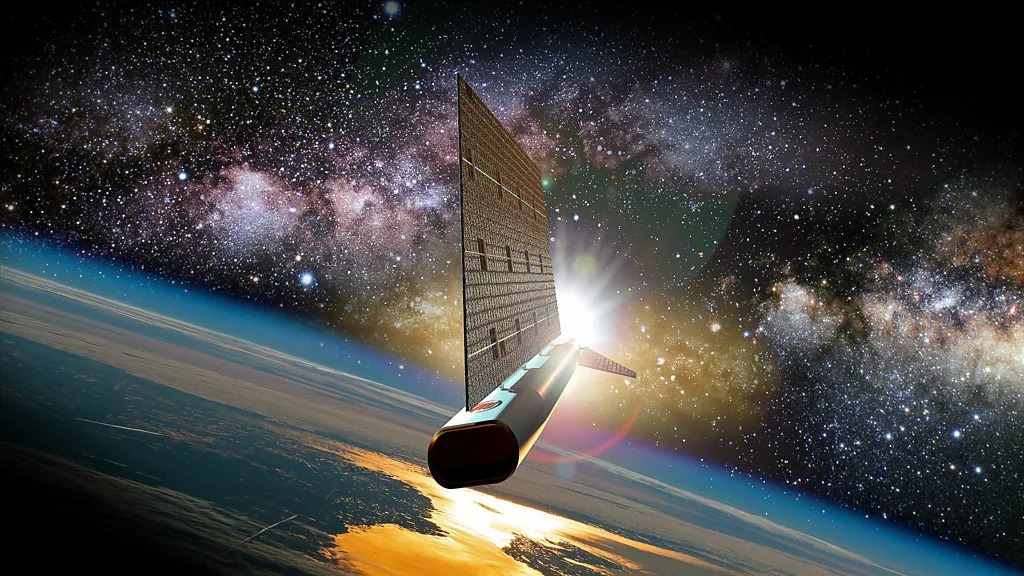
Sky Skimmers: The Race to Fly Satellites at the Lowest Orbits Yet
A new space race is unfolding—not in deep space but at the very edge of Earth’s atmosphere. Companies and researchers are developing Very Low Earth Orbit (VLEO) satellites, also known as sky skimmers, which aim to operate closer to Earth than ever before.
These ultra-low orbiting satellites could revolutionize Earth observation, communications, and scientific research. But maintaining flight at these extreme altitudes requires innovative propulsion and aerodynamic technology.
What is Very Low Earth Orbit (VLEO)?
Most satellites today operate in one of three altitude ranges:
- High Earth Orbit (HEO) – Above 22,000 miles (36,000 km) for geostationary satellites.
- Medium Earth Orbit (MEO) – Between 1,200 to 22,000 miles (2,000 to 36,000 km), where GPS satellites operate.
- Low Earth Orbit (LEO) – 250 to 1,200 miles (400 to 2,000 km), home to the International Space Station (ISS).
Pushing the Limits: What Lies Below LEO?
VLEO is anything below 250 miles (400 km), reaching down to 60 miles (100 km)—an altitude where Earth’s atmosphere is still present and poses significant challenges.
The Challenge: Battling Atmospheric Drag
Unlike satellites in higher orbits that can remain in space for decades or centuries, VLEO satellites experience constant atmospheric drag, which pulls them toward Earth. Without proper countermeasures, a satellite at this altitude could burn up within weeks or even days.
To combat this, companies are developing Air-Breathing Electric Propulsion (ABEP), an innovative method to harvest atmospheric molecules as fuel.
Air-Breathing Propulsion: A Potential Breakthrough
Instead of traditional fuel, ABEP technology collects air molecules, ionizes them, and expels them to generate thrust. This could allow satellites to maintain orbit indefinitely.
Several companies are working on ABEP systems:
- Stellar Advanced Concepts (UK) – Planning a VLEO demonstration by 2027 with UK government support.
- Kreios Space (Spain) – Developing a prototype set to launch by 2026.
- Redwire (USA) – Designing an orbital drone, SabreSat, for continuous VLEO operations.
Potential Benefits of VLEO Satellites
1. Ultra-High-Resolution Earth Observation
Being closer to Earth allows for higher-resolution imaging, useful for:
- Military and security surveillance
- Maritime and wildfire monitoring
- Agriculture and environmental studies
2. Faster Satellite-Based Communications
VLEO satellites can improve low-latency internet, potentially enabling:
- Direct-to-phone satellite communication
- Enhanced global internet coverage
3. Space Sustainability and Self-Cleaning Orbits
Unlike satellites in higher orbits, VLEO satellites naturally deorbit, reducing the risk of space debris accumulation.
The Race to Dominate VLEO
The US Department of Defense has invested $20 million into VLEO research. Meanwhile, the European Space Agency (ESA) is supporting projects like Phantom, a drag-reducing satellite set to launch by 2028.
As more companies develop air-breathing satellites, the competition is heating up. Experts predict the VLEO market could be worth $15 billion by 2032.
The Future of Sky Skimmers
With advancements in electric propulsion, aerodynamic design, and space weather monitoring, VLEO satellites could soon become mainstream. However, challenges like atmospheric drag, solar activity, and collision risks must be carefully managed.
Whoever wins the VLEO race will redefine the future of Earth observation and space communications—ushering in a new era of low-orbit space technology.
Outbound Link:BBC
Internal Link:Kenkou Land





